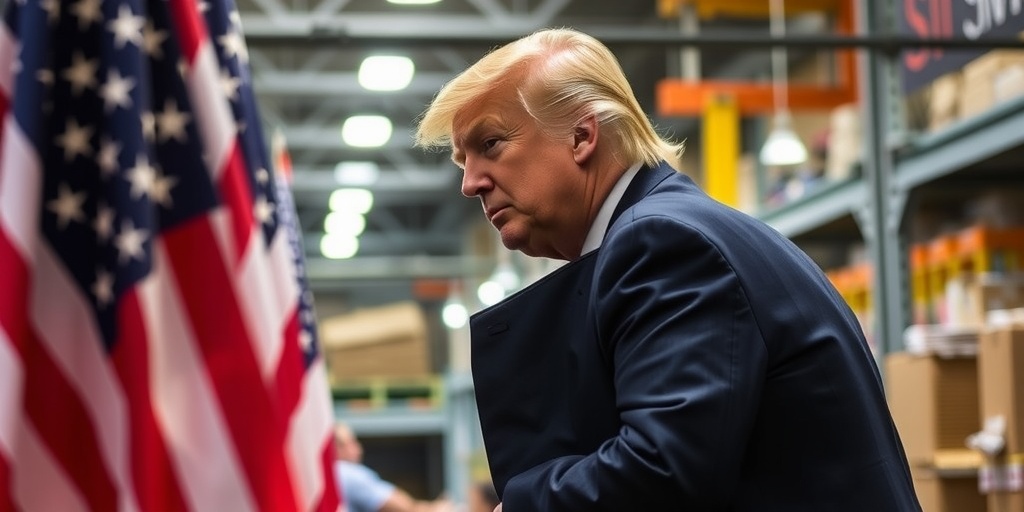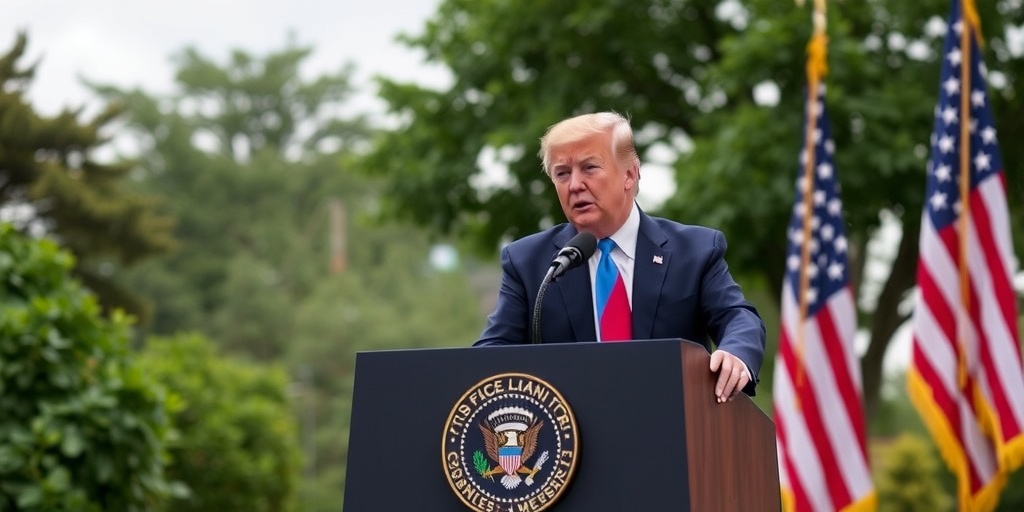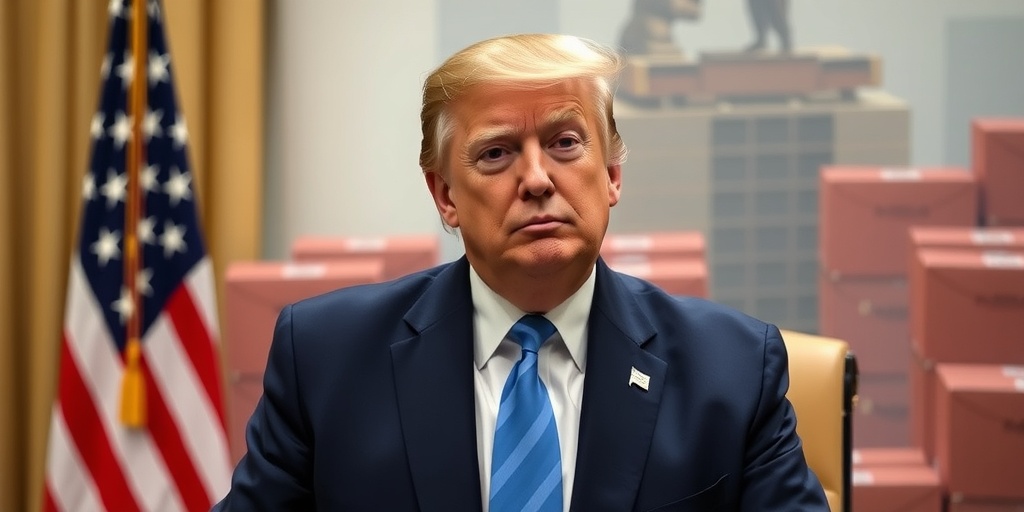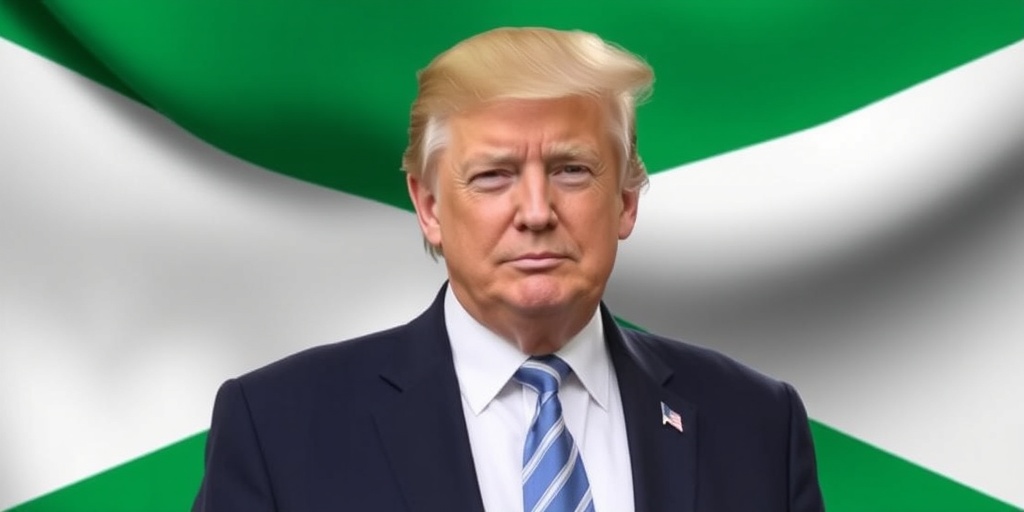Now Reading: Trump’s Gamble: Americans Will Endure Economic Struggles for Manufacturing Revival
-
01
Trump’s Gamble: Americans Will Endure Economic Struggles for Manufacturing Revival
Trump’s Gamble: Americans Will Endure Economic Struggles for Manufacturing Revival

Title: Trump’s Trade Policies: A Risky Gamble for Re-Industrialization
In a bold economic and political maneuver, President Donald Trump has initiated trade wars with key allies and competitors, including Canada, Mexico, China, and the European Union. This multifaceted approach aims at reviving manufacturing jobs in the American heartland, but it comes at a steep risk. The stakes are set high, as Trump posits that Americans may need to endure economic hardships in the short term for the promise of future industrial prosperity.
Recent communications from the White House indicate that Trump’s confidence in a booming U.S. economy is wavering. While he previously proclaimed an era of unprecedented growth, he has since acknowledged the possibility of an impending recession attributed to his economic strategies. Yet, he continues to maintain that even "a little disturbance" in the economy is an acceptable cost for the resurgence of manufacturing jobs on American soil.
Backing this strategy, Vice President JD Vance has publicly supported Trump’s economic vision, stating that those who invest and create jobs domestically will benefit from reduced taxes and relaxed regulations. Conversely, businesses that set up operations abroad will find themselves on their own, facing Trump’s punitive tariffs.
Reflecting on past attempts at such a strategy, one can look back to Trump’s first term in 2018 when hefty tariffs of 25 percent on steel and 10 percent on aluminum were introduced. At the time, Trump argued that national security was at stake and that these tariffs would promote job growth within the U.S. While the tariffs did temporarily create around 5,000 jobs, subsequent studies revealed a net loss of up to 75,000 jobs in industries reliant on imported steel and aluminum. Prices surged, adversely impacting consumers and manufacturers alike, leading to a situation where the manufacturing sector’s employment rates have stagnated to pre-tariff levels.
As Trump seeks to implement even broader tariffs today, the retaliatory measures imposed by affected countries are particularly targeted at industries in swing states that supported him in the elections. For instance, European nations have focused their tariffs on products like Kentucky bourbon and Harley-Davidson motorcycles, aimed at inflicting pain where his support base is strongest.
Scholars like William Galston from the Brookings Institution warn that Trump is essentially wagering the success of his presidency on the outcome of these tariffs, particularly at a time when public patience appears to be wearing thin. Trump’s historical advocacy for tariffs, rooted in his long-held belief that they hold the power to correct trade imbalances and support domestic production, is a driving force behind his current policies. Advisors, including Treasury Secretary Scott Bessent, have aligned themselves with this view to maintain their positions within the administration.
The rationale behind Trump’s tariffs, while multifaceted, has drawn criticism for its lack of coherence. Michael Froman, former U.S. Trade Representative, categorizes Trump’s arguments into leverage, revenue generation, and re-industrialization. Although leverage appears to be working—for instance, prompting Canada and Mexico to address border issues—the broader sustenance of this strategy is questionable as countries retaliate against U.S. tariffs.
On the revenue front, Trump’s narrative promises billions pouring into the Treasury from imports, as he draws inspiration from historical precedents like President William McKinley’s tariffs. However, the reality might not align with this vision, as evidenced by the costs associated with compensating American farmers who suffer due to retaliatory tariffs imposed by other nations.
Ultimately, Trump’s commitment to bringing jobs back to the U.S. is a reflection of his ideological commitment to traditional manufacturing, while he disregards the economic complexities and dynamics that underline global trade. Economists have pointed out that many components of American-made products cross borders multiple times throughout the manufacturing process, and that imposing tariffs could inflate costs and disrupt supply chains.
While both Trump and President Joe Biden share a desire to revitalize domestic chip manufacturing, their approaches differ significantly. Biden’s CHIPs Act, which secured bipartisan support, aims to invest $50 billion in advanced semiconductor plants. In contrast, Trump has dismissed such initiatives, asserting that tariffs will suffice in achieving his goals.
However, bringing advanced chip facilities to fruition requires time, with Intel recently delaying plans for a factory in Ohio by several years. As the manufacturing landscape evolves, it remains uncertain whether voters will exhibit the patience necessary for Trump’s vision to materialize amid the immediate challenges faced by Americans today.
As the administration continues to navigate these turbulent economic waters, the implications of Trump’s trade policies are set to resonate well beyond his presidency, shaping the future of American manufacturing and its role in an increasingly interconnected global economy.
Stay Informed With the Latest & Most Important News
Previous Post
Next Post
-
 01New technology breakthrough has everyone talking right now
01New technology breakthrough has everyone talking right now -
 02Unbelievable life hack everyone needs to try today
02Unbelievable life hack everyone needs to try today -
 03Fascinating discovery found buried deep beneath the ocean
03Fascinating discovery found buried deep beneath the ocean -
 04Man invents genius device that solves everyday problems
04Man invents genius device that solves everyday problems -
 05Shocking discovery that changes what we know forever
05Shocking discovery that changes what we know forever -
 06Internet goes wild over celebrity’s unexpected fashion choice
06Internet goes wild over celebrity’s unexpected fashion choice -
 07Rare animal sighting stuns scientists and wildlife lovers
07Rare animal sighting stuns scientists and wildlife lovers





















